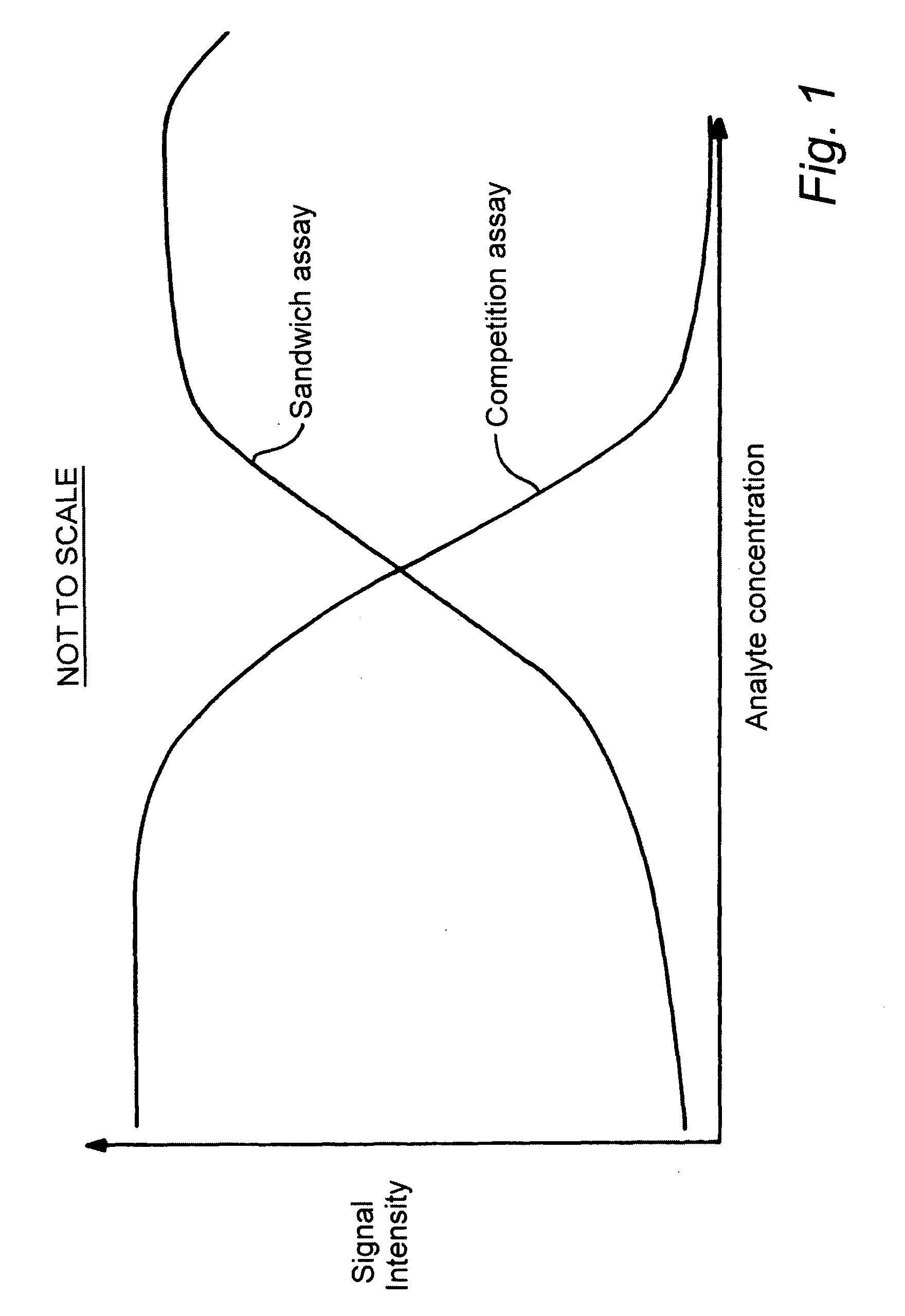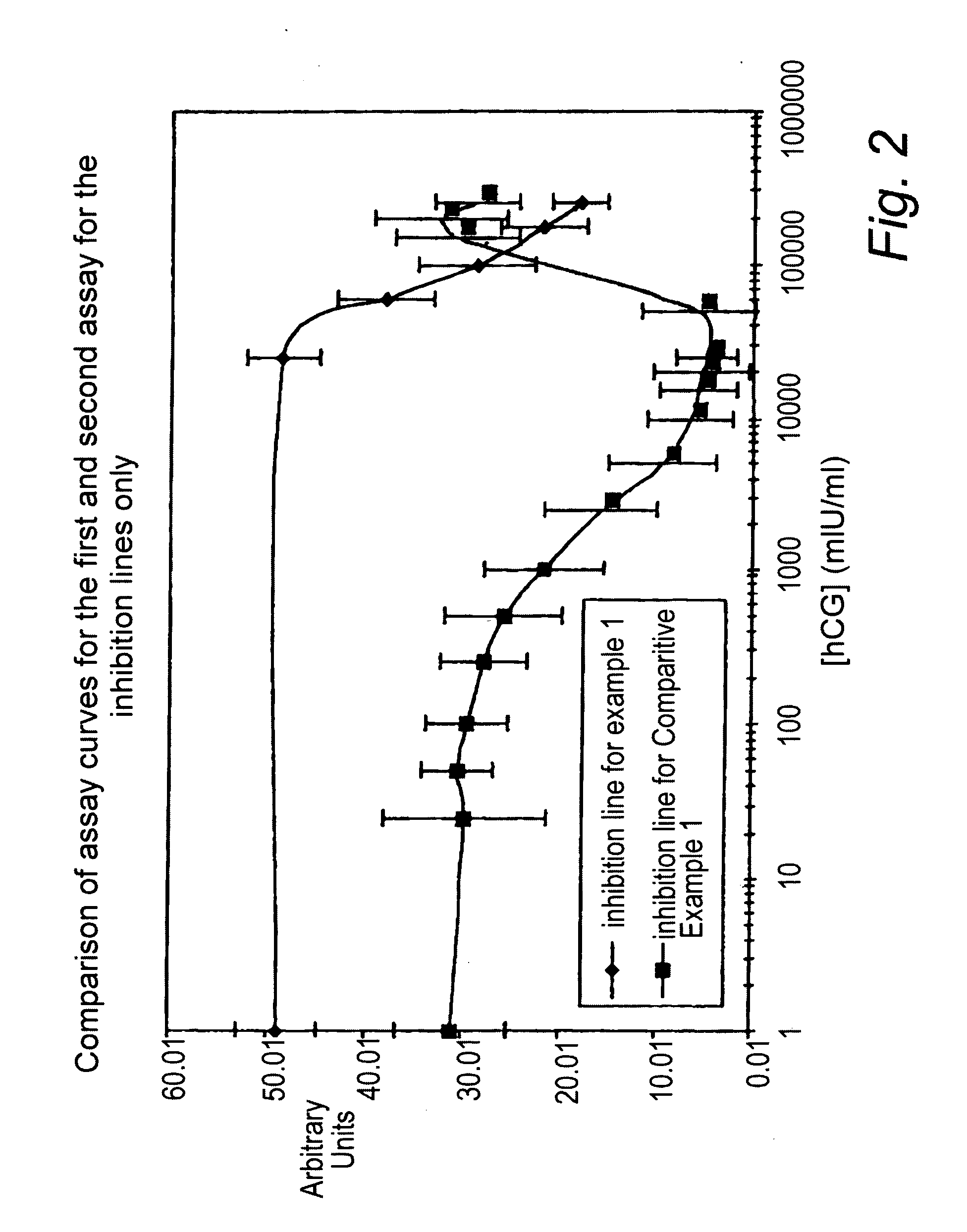Assay Device
a kit and assay technology, applied in the field of kit assay devices, can solve the problems of limited assay range of sandwich immunoassays, inability to perform inability to achieve assays with sandwich antibodies, etc., and achieve the effect of extending the assay analyte rang
- Summary
- Abstract
- Description
- Claims
- Application Information
AI Technical Summary
Benefits of technology
Problems solved by technology
Method used
Image
Examples
example 1
[0133]Assay devices were prepared in a similar manner to that of Comparative Example 1 except that the first and second detection zones were provided on respectively first and second test-strips, wherein the first and second detection zones were provided on nitrocellulose, each test-strip comprising glass-fibre sprayed with mobilisable latex labelled a-hCG antibody provided upstream from the nitrocellulose. The first and second detection zones were each provided on the nitrocellulose test-strips at the 16 mm position.
Running the Test Strips
[0134]The test-strips according to Example 1 and Comparative Example 1 were tested using in-house readers with calibrated hCG buffer standards at concentrations 0, 25 50, 100, 250, 500, 1000, 2500, 5000, 10000, 15000, 20000, 25000, 50000, 150000, 200000 and 250000 mIU / ml hCG.
[0135]The signal intensity measured at the inhibition detection zones as a function of hCG concentration of the assays of example 1 (denoted by --♦--) and comparative example ...
example 2
Preparation of Assay Devices Comprising a First Test-Strip Comprising a First Sandwich Assay and a Second Test-Strip Comprising a Scavenger Reagent in Addition to a Sandwich Assay
Preparation of the First Assay Test-Strip
[0137]The first assay test strip was prepared according to the first (sandwich) assay test-strip according to that of Example 1.
Preparation of the Second Assay (Scavenger) Test-Strip
[0138]The detection zone was prepared on nitrocellulose using the preparation according to that of the first assay test-strip of Example 2.
[0139]Mouse-anti-human α-hCG mAb (clone 3299) conjugated to 400 nm blue polystyrene latex (Duke Scientific) was mixed with scavenger antibody mAb mouse anti-human β-hCG (in-house clone 3468) at 3 mg / ml to give a final % blue latex of 3%, a final 3468 concentration of 0.075 mg / ml and 0.06 mg / ml concentration of the free anti-β hCG antibody. The resulting mixture was airbrushed onto Whatman glass fibre (F529 25 mm wide reels) using the BIODOT XYZS (seria...
PUM
| Property | Measurement | Unit |
|---|---|---|
| pore size | aaaaa | aaaaa |
| pore size | aaaaa | aaaaa |
| pore size | aaaaa | aaaaa |
Abstract
Description
Claims
Application Information
 Login to View More
Login to View More - R&D
- Intellectual Property
- Life Sciences
- Materials
- Tech Scout
- Unparalleled Data Quality
- Higher Quality Content
- 60% Fewer Hallucinations
Browse by: Latest US Patents, China's latest patents, Technical Efficacy Thesaurus, Application Domain, Technology Topic, Popular Technical Reports.
© 2025 PatSnap. All rights reserved.Legal|Privacy policy|Modern Slavery Act Transparency Statement|Sitemap|About US| Contact US: help@patsnap.com



